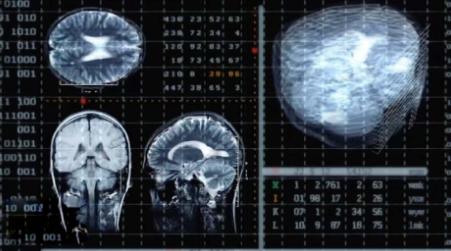Neural networks are fundamentally transforming the healthcare landscape, ushering in a new era of precision, efficiency, and accessibility in diagnosis, early detection, and personalized treatment. This technological revolution is not simply replacing traditional medical practice but is augmenting the capabilities of clinicians, optimizing health systems, and placing patient-centric care at the forefront of innovation. Below is an in-depth exploration of how neural networks are enabling these sweeping changes in healthcare.
Health data is growing at an unprecedented rate. Electronic health records, medical images, genomic sequencing, and real-time data from wearables present enormous learning opportunities. Yet, until very recently, the sheer scale and complexity of this data made meaningful extraction of insights extremely challenging using traditional statistical methods. Neural networks, especially deep learning approached have proved exceptionally capable in finding patterns in vast, complex, and high-dimensional healthcare data.
These models excel at modeling non-linear relationships and integrating heterogeneous sources of information, such as combining radiological images with electronic records and genetic profiles. This unique power sets the stage for changes in three core areas: diagnosis, early detection, and personalized medicine.
Revolutionizing Diagnosis
One of the most visible impacts of neural networks is found in diagnostic medicine. By drawing upon huge datasets of labeled medical images, CT scans, MRIs, X-rays, convolutional neural networks (CNNs) are matching or even exceeding expert-level performance in detecting a wide variety of conditions, from lung cancer nodules and brain tumors to diabetic retinopathy and melanoma.
These systems don’t just look for the presence or absence of a disease but can identify subtle cues invisible to the human eye. For example, CNNs analyzing brain MRIs now routinely assist neurologists in distinguishing early Alzheimer’s disease from other forms of cognitive impairment. The clinical implications are profound: more accurate and earlier diagnoses, improved efficiency in radiology departments, and reduction in human error, particularly in under-resourced settings.
Neural networks also integrate clinical notes and laboratory values, using natural language processing combined with deep learning to flag at-risk patients before critical deterioration. Hospitals worldwide now deploy such models in their intensive care units to anticipate sepsis, heart attacks, or respiratory distress several hours in advance, giving medical teams precious time to intervene.
Pushing Early Disease Detection
Early detection is a cornerstone of effective medical intervention, drastically improving patient outcomes and reducing healthcare costs. Neural networks are making this possible in several ways.
Medical imaging, accelerated by deep learning, has democratized specialist-level interpretation for remote and underserved areas. Portable ultrasound devices powered by neural networks guide non-specialist healthcare workers in identifying pneumonia, cancerous lesions, or complications in pregnancy. In dermatology, smartphone apps equipped with trained neural networks enable individuals to assess skin lesions, flagging possible melanoma for review long before a specialist appointment can be arranged.
Furthermore, in genomics and pathology, neural networks can analyze DNA sequences and digital biopsy slides, recognizing the earliest molecular or tissue changes indicative of disease long before symptoms appear. These methods are revolutionizing screenings for hereditary cancers, rare diseases, and autoimmune conditions.
Personalized Treatment and Predictive Analytics
Personalized medicine the tailoring of medical treatment to the individual characteristics of each patient has always been a lofty goal in healthcare. Neural networks are rapidly making it a practical reality.
By integrating genetic data, clinical history, and lifestyle factors, deep learning models identify subgroups of patients with shared risk factors, drug response patterns, or likely therapy outcomes. In oncology, for instance, treatment regimens optimized using neural network models have demonstrated greater effectiveness and fewer side effects, as the chosen therapies are better matched to the genetic profile of a patient’s tumor.
Furthermore, advanced models predict disease progression, optimal intervention timings, and the likelihood of adverse events. Cardiology clinics deploy neural network-based risk stratification tools to help determine which heart failure patients will benefit from aggressive surgical interventions versus conservative medical management. The ability to anticipate, rather than react to, disease trajectories marks a paradigm shift in care delivery.
Enhancing Healthcare Access and Equity
Another important impact of neural networks in healthcare is the broadening of access to high-quality medical care. Remote and low-income regions often lack trained specialists and advanced diagnostic equipment. Neural network-empowered mobile platforms and point-of-care devices bridge this gap, delivering expertise to the bedside regardless of geography.
Telemedicine initiatives now integrate AI decision support, allowing community health workers to triage patients with automated assistance, refer severe cases, and monitor chronic conditions with unprecedented precision. The cost-efficiency and scalability of neural network solutions accelerate their adoption in global health, narrowing disparity gaps across populations.
Real-Time Monitoring and Wearable Technologies
Wearable devices that continuously track vital signs—heart rate, ECG, glucose levels—generate immense data streams. Neural networks are deployed to detect patterns of arrhythmia, hypoglycemia, or abnormal blood pressure trends long before a clinical crisis emerges. For chronic disease management, such as diabetes or heart failure, these models empower patients with actionable recommendations, reducing hospitalizations and improving quality of life.
Such real-time analytical tools are also finding vital use in hospital wards. Smart sensors and neural networks can monitor patients post-surgery, predicting infections, clots, or complications, and reducing the burden on overstretched medical staff.
Empowering Clinicians and Augmenting Decision-Making
A common misconception is that neural networks will replace healthcare professionals. In practice, these models are becoming trusted partners, enabling clinicians to make better decisions faster. Decision support systems powered by neural networks sift through vast libraries of clinical literature and guidelines, offering personalized, evidence-based recommendations for complex cases in seconds.
Emerging generative AI tools, underpinned by neural architectures, help clinicians write patient summaries, validate differential diagnoses, and communicate scenarios to patients and families with unprecedented clarity and speed.
Ethical Use and Limitations
The adoption of neural networks in healthcare is not without challenges. Ensuring data privacy, algorithm transparency, and the elimination of biases are essential. Explainable AI—providing insights into how models arrive at their conclusions—is an area of active development, building clinician and patient trust in these novel tools.
Moreover, neural networks must be trained on diverse, representative datasets to avoid reinforcing healthcare disparities and must remain subject to rigorous clinical validation. Global health organizations and regulators are now developing guidelines and standards to ensure responsible, equitable deployment of these technologies.
Looking Ahead: The Future of Health
With the pace of advancements accelerating, the healthcare environment in 2025 and beyond will look markedly different. Neural networks are poised to drive a shift from reactive to proactive, from generic to personalized, and from isolated expertise to global collaboration.
Innovations in federated learning, where models are trained across institutions without sharing raw data are expanding the scope of collaborative research while maintaining patient privacy. Advances in multi-omics data integration, longitudinal patient monitoring, and explainable AI will continue to elevate the accuracy and reliability of neural network-driven healthcare.
Ultimately, the transformative impact of neural networks lies not just in improved accuracy or speed, but in changing the very nature of car, empowering patients, enabling clinicians, and building more resilient, responsive, and inclusive health systems. As these technologies mature, their promise is clear: a healthier, fairer world where diagnosis, detection, and treatment are tailored to each individual and available to all.
Neural networks have become a cornerstone of innovation in the financial sector, profoundly reshaping how financial systems operate, predict market dynamics, and detect fraud. Their ability to analyze large and complex datasets, uncover subtle patterns, and learn iteratively has led to unprecedented advancements in forecasting, risk management, and security. Below is a comprehensive look at how neural networks are transforming financial systems and invigorating market prediction and fraud detection.
The Complexity of Modern Financial Systems
Financial markets generate massive volumes of data every day, spanning stock prices, transactions, news, social media sentiment, and economic indicators. Traditional statistical methods, while useful, struggle to process this high-dimensional, dynamic, and non-linear data effectively. Neural networks, especially deep learning architectures, excel in unraveling these complexities by modeling intricate relationships and making sense of unstructured information.
The financial sector leverages neural networks for two primary purposes: predicting market behavior and safeguarding against fraudulent activities. These functions are critical to the health and stability of global economies, impacting everything from investment strategies to regulatory compliance.
Neural Networks in Market Prediction
Stock market prediction is notoriously challenging due to the market’s volatile, chaotic, and multifactorial nature. Neural networks are uniquely suited for this environment because they can process diverse inputs—price histories, trading volumes, corporate earnings reports, macroeconomic data, and even textual data from news and social media—to generate insightful forecasts.
Through techniques such as recurrent neural networks (RNNs) and long short-term memory networks (LSTMs), which are designed for sequential data analysis, neural networks predict stock price movements by identifying temporal patterns and trends that human analysts might miss. These models continuously learn and adapt to new data, improving prediction accuracy over time.
Moreover, neural networks assist portfolio managers in constructing resilient investment portfolios. By analyzing risk-return trade-offs, correlations among assets, and market conditions, these models optimize portfolio allocation to maximize returns while minimizing exposure to risks. High-frequency trading systems also benefit from neural networks’ ability to execute trades faster and more accurately, reacting to market shifts in real time.
Enhancing Financial Planning and Risk Management
Beyond stock prediction, neural networks are instrumental in financial planning and risk assessment. Financial institutions utilize these models to anticipate credit risks by analyzing borrower data not only from conventional credit scores but also from alternative sources such as transaction histories and social behavior.
In risk management, neural networks identify early warning signals related to market downturns, liquidity crises, or operational risks. This predictive insight empowers companies to adjust their strategies proactively, reducing financial losses and enhancing stability.
Furthermore, digital twins virtual replicas of financial systems powered by AI are used for scenario analysis and stress testing. These models simulate market conditions under various scenarios, helping institutions prepare for unexpected shocks and economic disruptions.
Revolutionizing Fraud Detection
Fraud detection is a critical challenge in finance, as fraudulent activities can incur tremendous financial losses and damage trust. Traditional rule-based fraud detection systems are limited in their ability to detect sophisticated schemes or adapt to evolving tactics.
Neural networks bring powerful new capabilities to fraud prevention by learning from vast datasets to detect anomalies and subtle patterns indicative of fraud. These models analyze multiple data points simultaneously—transaction amounts, location, time, device information, and user behavior—to assess the likelihood of fraudulent activity.
Advanced architectures like graph neural networks (GNNs) further enhance fraud detection by capturing relationships and interactions between entities (such as customers, accounts, and transactions) within financial networks. This holistic perspective uncovers complex fraud rings and synthetic identities that evade simpler detection methods.
The real-time monitoring offered by neural network systems enables immediate intervention. For example, e-commerce platforms employ these models to block suspicious transactions before completion, significantly reducing fraud losses.
AI-Driven Innovation Empowering Financial Institutions
Increasingly, financial institutions incorporate neural network models into their core operations to streamline processes and drive decision-making.
Credit risk assessments are increasingly powered by AI models that incorporate a wider range of variables than ever before, enabling more precise and fair evaluations. This improves inclusivity by granting access to credit for individuals with limited traditional credit histories.
Operational efficiency also benefits as neural networks automate routine analyses, compliance checks, and reporting tasks. Robotic process automation integrated with AI significantly reduces manual labor and errors.
Furthermore, natural language processing (NLP) combined with neural networks helps extract market sentiment from news articles and social media posts, offering investors a sentiment-based edge.
Challenges and Ethical Considerations
While the benefits of neural networks in finance are substantial, these systems are not without challenges. Model interpretability remains a crucial issue since financial regulations require transparency to justify decisions such as loan approvals or trade executions.
Data bias and fairness are also critical concerns. Neural networks trained on biased datasets can perpetuate inequality or generate false positives/negatives in fraud detection.
Continuous monitoring, updating, and governance frameworks are essential to ensure models remain accurate, compliant, and ethical in a rapidly changing financial landscape.
The future of finance will witness an even deeper integration of neural networks across all facets—from decentralized finance (DeFi) to ESG (environmental, social, and governance) investing powered by AI insights. With growing computational power and algorithmic sophistication, neural networks will enable fully autonomous financial agents that manage portfolios and trading with minimal human intervention.
Increasing adoption of cloud-based platforms and AI-powered analytics tools will democratize access to advanced financial modeling, leveling the playing field for smaller firms and individual investors.
In summary, neural networks are a driving force behind the ongoing transformation of financial systems. By enhancing market predictions, strengthening fraud detection, and optimizing risk management, they offer a smarter, more secure, and efficient financial ecosystem that benefits institutions and consumers alike. As the technology evolves, its promising impact on financial stability and innovation is poised to grow exponentially.



